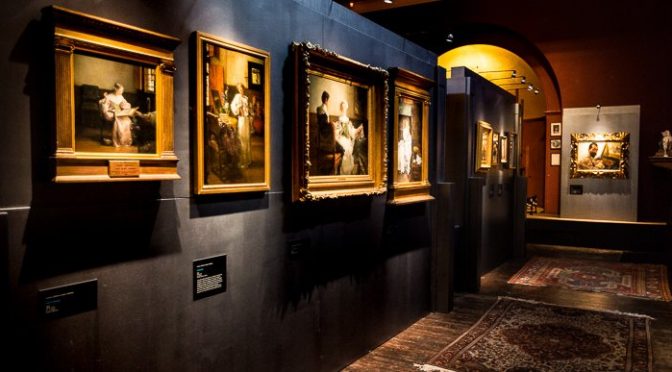Did you know the original word for money was talent? In Classical Latin, talents referred to “balance, weight; a sum of money. In Medieval Latin, talent referred not only to money, but had also come to mean having a special natural ability, aptitude, or gifts that one was committed to use and would always strive for improvement.
The Greek word “talanton” was used to describe anything weighed for balance, and in later times for a sum of money. It was also used by the Germanic languages and the Celts for “a sum of money, specifically 57.7 lbs of silver.”
It is interesting to note that Leonardo DaVinci sold the Mona Lisa for today’s equivalent of nearly a million dollars and made his client (The King of France, King Francois I) pay him in silver bars!
Jan Van Eyck charged his paintings by their actual weight in gold. (This would have been substantial as he painted on heavy wooden panels).
Painters and sculptors (i.e. fine artists vs commercial artists) often start earning money by entering competitions. Sometimes they win prize money and once in a while brings attention to their work to gallery owners. If it does, a gallery owner may invite an artist to exhibit in a group show in the future.
Some galleries have competitions for group shows. Competitions often charge artists a fee for each work submitted to enter. These fees help fund the purse for the winners as well as cover expenses for the gallery. If the artist is lucky enough to be accepted into a group show, galleries will generally exhibit 2–3 paintings or sculptures by the artist if it fits the theme of the exhibit.
If the artist and gallery are both lucky, those art pieces will sell at the group show. If they sell fast, they are priced well. The gallery will usually take a 50% commission. This is quite fair as the gallery is paying for rent, insurance, telephone, advertising, commissions, staff, electric bills, and perhaps some cheap wine and cheese for the opening night.
If all of the art pieces in the group show sell, the gallery owner may offer you a one person show in the coming year and raise your prices. If the paintings sell well in the one person exhibit, there is a demand for your work. The gallery may choose to represent you. It’s really about finding whether your art is a good fit with their client’s tastes.
Remember, a gallery represents many artists and there are only 12 months in the year. Wall space is real estate. You may not be offered a one person show until you have enough collectors to warrant the risk and expense the owner must take. You will be asked to provide enough work to fill the space and the work will be consigned by you to the gallery. Art is one of the few businesses in the world where the business owner often gets their stock for free. Ironically, artists that are rude, needy, or narcissistic will find themselves without a gallery fast. The art world can be small and bad behavior can cost you a career.
Artists make money from their art in addition to selling through galleries. There can be competition money, grant money (that the artist has applied for), corporate art sales through an agent or sold through your gallery, licensing of work (for a book covers, etc). There are also print sales, commissions (someone hires you to paint something specific). Commissions often comes through your gallery or an agent and yes, they will take a cut. If you have a lot of social media followers of your work, you can receive financial support off a Patreon account.
Fine art is a skill that takes a long time to acquire and out of pocket costs are expensive. If you are disciplined and always honor that it is a business, it can treat you well.
For more information on what galleries look for in artists and about art agents, art brokers and art dealers, please visit the following links:
- The Good, The Bad, & The Ugly: What galleries look for when you submit your art for representation.
- What is the Difference Between an Art Dealer, an Art Broker, and an Art Agent?
Featured Image: Alma Tadema exhibit at Leighton House Museum, London. Photo by Kevin Moran Photography, London.


Leave a Reply